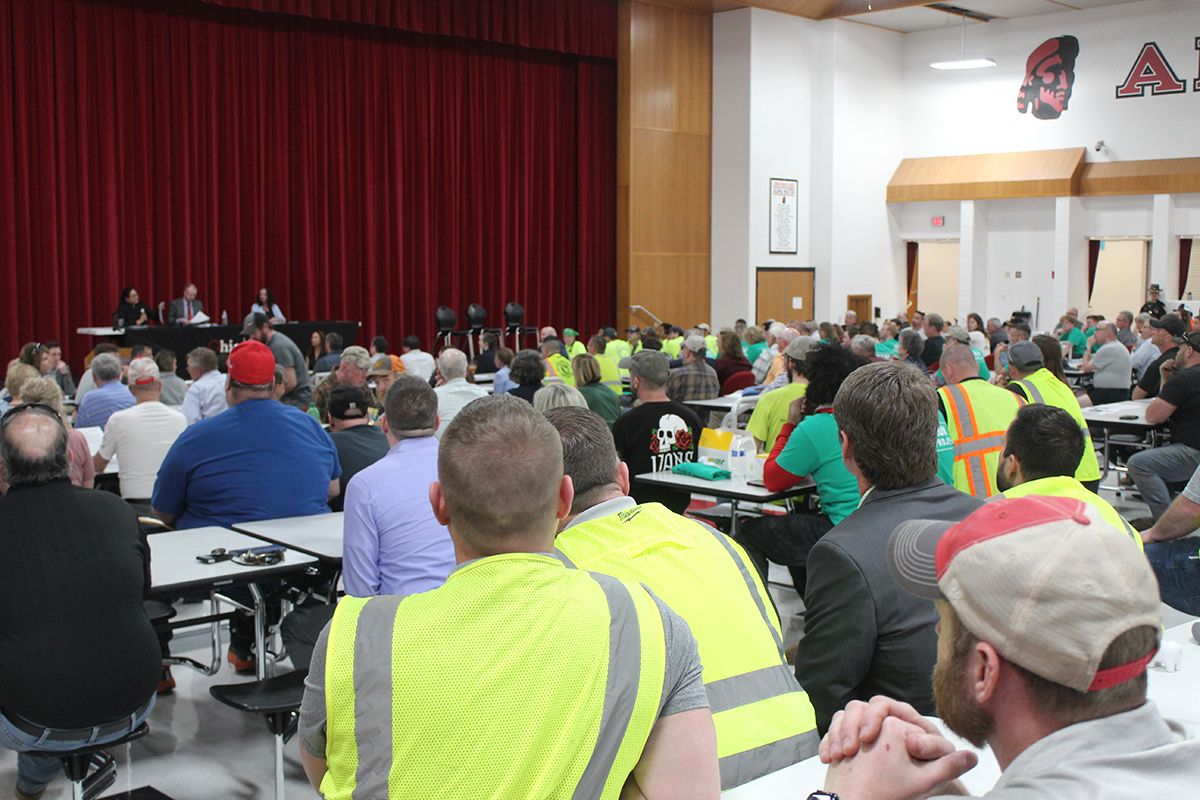
PLAIN CITY, Ohio — Like many of Ohio’s solar projects, the proposed Oak Run project, in Madison County, has faced opposition from nearby farmers and others who don’t want to see farmland taken out of production. Savion, the company proposing the 800-megawatt project, however, says installing solar panels doesn’t mean the land can’t be used for farming.
The company has a plan to farm between the rows of solar panels on at least 2,000 acres of the proposed Oak Run project site and to contract with local farmers for the work. The company also has plans for using grazing to maintain vegetation in areas that aren’t being used for crop production.
In 2021, Savion established Between the Rows, LLC, to collaborate with Ohio State University on agrivoltaics research. Sarah Moser, the director of farming operations and agrivoltaics for BTR, has been working with Ohio State researchers for the last two years to study the production of forage crops under solar panels.
Research

A small-scale study was done on her family’s hog farm, in Van Wert County, using cover crops, alfalfa and a grass/legume mix between rows of solar panels.
The Moser family raises hogs from wean to finish in two barns that hold a total of about 2,400 head. They installed solar panels to generate power to help run the barns, said Trent Moser, Sarah’s brother.
“We decided with that wasted space in between them, we’d try to plant something,” he said.
Trent Moser said the trials they’ve done on their farm show the potential for forage production, along with solar energy production on a larger scale.
“I definitely think it would work,” he said.
He’s hoping to try growing soybeans between their panels this year.
One concern about farming within solar arrays is moving farm equipment between rows of panels, but technology can
help prevent collisions.
“With GPS and autosteer in this day and age, I don’t see any problem with it,” Moser said.
To expand on the preliminary research done at the Moser family’s farm, Ohio State applied for a grant last year through the U.S. Department of Energy’s Foundational Agrivoltaic Research for Megawatt Scale, or FARMS, funding program.
The first round of grant funding was announced last December, and Ohio State was awarded $1.8 million to conduct grazing and forage production trials using precision agriculture technologies and to study the impacts on soil health at an operating utility-scale solar site. The details of the project are not yet available but researchers are hoping to begin the study this summer.
Questions continue

Meanwhile, the Ohio Power Siting Board continues to deliberate over the Oak Run Solar Project. Both proponents, including the Moser family, and opponents of the proposed project gathered at Jonathan Alder High School, April 11, for a public hearing by the siting board.
Outside, a pickup truck front and center in the school parking lot carried a spray-painted sign over the tailgate reading, “No solar on farmland.” Off to the side, a group of farm kids played with a piglet and held up signs reading, “My future is solar powered,” and “Solar power makes ewe smile.”
Prior to the hearing, the Solar Farm Summit held a separate news conference and rally in support of the project, especially the plans for combining solar power production and agriculture.
The project would occupy 6,050 acres of land about 10 miles north of the Farm Science Review in Madison County. Most of the land parcels included in the project proposal are owned by Midwest Farms LLC, which has ownership links to Bill Gates, one of the founders of Microsoft. The ground is prime farmland in a county where a 210-bushel corn yield is merely average.
During the April 11 hearing, some commenters favored the Oak Run project because of the funding it would generate for local communities and schools, but others focused on the impact on agriculture.
Arly Drake, an agronomist who lives in Madison County, spoke at the hearing in opposition to the project.
“I know that the project proposes to investigate agrivoltaics,” Drake said. “However, I know that most plants cannot grow well under shade and if farming is limited between the rows of these panels, soil compaction is likely to occur there, which is also not good for most plants and certainly not for the health of the soil.”
Drake noted that growing grain crops on prime soils like those at the proposed project site produces better yields and requires fewer inputs that growing crops on poorer soils. Removing the higher quality soil from production pushes production toward those lower quality soils, she said.
“Driving production to less healthy soils is costly,” she said.
Avery Davison, who grew up on a Madison County farm, also spoke up at the hearing in opposition to the solar project.
“I don’t know if any of you have looked at land prices lately. They’re astronomical,” she said. “Buying is not an option for beginning farmers. The next best option is going to be to rent. Unfortunately, solar projects are coming in and offering 3 to 4 times that what a beginning farmer can offer for the same acres.”
The long lease terms for the solar projects is also a problem, Davison said. “It’s 40 years, so that basically robs two generations of the ability to farm those acres.”
Opposition

The township trustees for all three townships that would have land in the Oak Run project unanimously passed resolutions opposing the project.
“Some of the best, most fertile farmland in Madison County will be lost by this venture,” the resolutions stated.
The Madison County Commissioners also passed a resolution opposing the project by a vote of two to one. The boards of local school districts, on the other hand, have passed resolutions in favor of the project.
Those resolutions have been submitted, along with nearly 600 other comments to the Ohio Power Siting Board for consideration as the board decides whether to approve the project, deny it or approve it with added conditions. The board will have an evidentiary hearing on the project May 15 and will schedule the project for a decision once the evidentiary process is complete.












Agrivoltaics is working all over the world and the Europeans are well ahead of us proving that more things grow under the panels than you might think. And grow better, with greater yields and resilience. I encourage anyone with an interest to dig into the 500+ articles, research papers and links openly indexed on the Solar Farm Summit website: https://solarfarmsummit.com/agrivoltaics-index
The Ohio Power Sitting Board Staff has approved to recommend this massive project because it is on powerful big business land. Big business has powerful influence on the state. In contrast the Ohio Power State Sitting Board Staff recommended to deny approval to Birch Tree Solar Farm in Allen County. This mentioned solar farm was to be on land owned by local family farms that are not elites and cannot get the attention of the state at a drop off a hat.